
Finally! For 15 years, I had been waiting for someone to take a Honda NSX and give it the engine orientation it should have always had.
At the 2009 Tokyo Auto Salon, Mugen unveiled the NSX-RR Concept – a wide-body, Super GT-inspired road version of the NSX-R. The ‘Double-R’ was 150mm wider, had contemporary design cues, and a redesigned cabin with modern switchgear and red Alcantara as far as the eye could see. But the defining aspect of the car was that Mugen turned its engine 90 degrees counterclockwise to mount it longitudinally, just as it did with its race cars.
I visited Mugen to shoot the NSX-RR, and ever since then it has remained in my mind as the best incarnation of the NSX. Ever.
However, there was one big problem with the car – it was nothing more than a mock-up. There was no transmission, let alone even exhaust headers. It was just a big old tease for a car show. This was a huge miss as far as I was concerned. Even with a stupid price tag, had Honda with Mugen built 30 NSX-RRs, I guarantee they would have sold out right away. But I digress.

Fast forward 13 years, and I find myself just outside of Ferrara in northern Italy to look at another unique NSX.

Alan Simoni, the owner of the automotive accessory company Simoni Racing and a European time attack racer, has done what Mugen could not do.

In his attempt to create the best possible interpretation of the original NSX – and following countless preceding build stages – Alan fitted a sequentially-shifted transaxle transmission and turned the engine 90 degrees to match.
Before anyone says that Esprit in Japan has already done this – which is true – remember that they opted for forced induction, which I feel takes away from what Mugen wanted to achieve with a potential NSX-RR.

Let’s break down what the NSX called La Rossana is all about…


Starting with a completely stock NSX donor car that Alan drove around for a while before starting the project, first up was the exterior makeover.
With his love for all things JDM, Alan opted for a complete Rocket Bunny conversion. This comprehensive kit replaces the factory front end with a one-piece cowl incorporating the bumper, hood and fenders. Surprisingly, the kit dictated that the rear end be shortened by cutting away a sizable section of the chassis/body.
Yep, there was no going back.

For balance, Alan went with a staggered wheel setup. The RAYS Volk Racing TE37Vs measure 17×9-inch up front and 18×10-inch at the rear, all shod in racing slicks.

The Time Attack series in Italy and Europe allow slicks, something that can’t be said for Japan. In the motherland, everyone still runs semi-slicks to remain connected with the motorsport’s street car origins.
The 17-inch front wheels dictated a more compact brake caliper, hence AP Racing 4-pots behind the 6-spokes. The rear end features 4-pot Brembos.


While the shorter rear end of the Rocket Bunny conversion does alter the NSX’s factory proportions, Alan has balanced it back up with a bespoke carbon fiber GT wing. The wing provides functional performance and the stays that prop it up a spot for a touch of branding.
Using Simoni Racing parts, Alan finished things off with a custom taillight setup using red LED strips.

Let’s talk about the engine, which visually starts with a GT-inspired intake that scoops up air from over the roofline and directs it right into the airbox on top of the velocity stacks. At speed, this setup creates a ram-air effect that forces air into the engine with positive pressure, resulting in more response and power.


At the heart of it all is a custom dry-sump C30A – one of the most heavily modified C-series engines I have ever seen. The build is based on a Brian Crower 3.5L stroker kit, which boasts forged pistons and titanium connecting rods. The cylinder heads were given a once over and fitted with Toda Racing cams, larger titanium intake valves and Inconel exhaust valves. Once scooped up by the snorkel, the air is forced into six 48mm drive-by-wire-controlled throttle bodies, where it meets fuel supplied by six 750cc injectors.

The ignition system features Audi R8 coils, while engine management is handled by a Life Racing F88RS ECU.
This highly refined setup pushes 423hp at 8,250rpm, with a hefty 407Nm hitting at 5,500rpm. Given the car weighs just over a metric ton, the performance is there.

The 90-degree rotated C30A has been mated to a Sadev SL-90 6-speed sequential feeding drive through an AP Racing clutch. A cradle/subframe had to be designed and fabricated to align and bolt the transaxle in place.

This is an NSX that means serious business.

The custom exhaust system has been routed to poke through the Rocket Bunny rear bumper.
On the handling side of things, Alan uses 3-way adjustable AST coilovers. Furthermore, the suspension links, bushings and sway bars have been swapped for race equivalents that provide crisp feedback through corners.

You might have picked up on a few nods to Ayrton Senna throughout the car. The late Formula 1 legend helped Honda refine the chassis and handling during the NSX’s development stage.

Let’s take a look inside the cabin to see another interesting angle of this project.


Swing the doors open, and it is obvious that no corners were cut with the roll cage. The bars stretch through into the engine bay to triangulate all critical points.
What impressed me the most was seeing the engine had been brought forward around 200mm for optimal weight distribution.

This called for a repositioned firewall, which you can see above with all the heat shielding.


The Sadev transmission is air-shifted, with the compressor mounted in front of the fire suppressant tank.

The ECU has been programmed for flat shifting, allowing Alan to keep his right foot planted on the Tilton throttle pedal as he machine-guns through the gears.

A Simoni Racing full race bucket set, custom-molded to Alan’s body, provides support and safety.


Alan has reached the higher limits of what his NSX can achieve and is currently sitting at a bit of a crossroads. Does he push things even further with turbocharging, or just call it a day and start a whole new project?
It’s not an easy choice to be faced with, but whatever the outcome, La Rossana will go down in history as one of the most epic NSX builds ever.
Dino Dalle Carbonare
Instagram: dino_dalle_carbonare
dino@speedhunters.com
Simoni Racing ‘La Rossana’ NSX
Numbers: Max Power: 423hp at 8,250rpm, Max Torque: 407Nm at 5,500rpm, Weight: 1,050kg/2,315lbs
Engine: Honda C30A V6 DOHC VTEC, Brian Crower 3.5L stroker kit, CP-Carrillo aluminum forged pistons, titanium connecting rods, Toda Racing cams, Toda Racing cam pullies, 36mm titanium intake valves, AS Motorsport Inconel exhaust valves, ScienceofSpeed titanium LMA kit, aluminum airbox with Sprint Filter panel filter, six 48mm throttle bodies with custom Evosystem drive-by-wire control, Life Racing F88RS ECU, CTS Maranello headers and custom exhaust system with Simoni Racing exhaust tips, Manitor Sport silicone radiator Hose kit, Setrab oil cooler, oil pan baffle, AP Motorsport aluminum radiator, Autotecnica Motori pulley system, 750cc/min fuel injectors, lightweight battery kit, high pressure fuel regulator, 2x Bosch Motorsport 044 fuel pumps, custom 35L fuel tank, NGK Racing spark plugs, Audi R8 ignition coils, Autotecnica Motori custom dry sump
Driveline: Sadev SL-90 6-speed sequential transmission (air-shifted) with steering wheel paddles, AP Racing clutch, lightweight flywheel
Suspension/Brakes: AST 3-way coilovers, ScienceofSpeed toe Links and rear beam bushings, Cedar Ridge front pivot clamps, ScienceofSpeed adjustable anti-sway bars front/rear, Cedar Ridge sway Bar end links front/rear, Downforce front brake air deflector, AP Racing 4-pot front calipers with 330x28mm floating discs, Brembo GT 4-pot rear calipers with 328x28mm floating discs
Wheels/Tires: RAYS Volk Racing TE37V – 17×9-inch ET15 front, 18×10-inch ET0 rear, Pirelli P-Zero slicks 245/620ZR17 front, 265/645ZR18 rear
Exterior: Full Rocket Bunny body kit – front hood conversion, front lip spoiler, twin front canards, side skirts, side canards, rear fenders, rear bumper, rear diffuser, Simoni Racing carbon GT Wing with swan neck pedestals, Simoni Racing red chrome wrap film, Route Ks GT air intake scoop, Kite rear fender side ducts, Simoni Racing front tow strap, Simoni Racing rear tow ring, Plastics 4 Performance full Lexan window kit, Craft Square carbon fiber side mirrors, Simoni Racing LED tail lights, Seibon carbon fiber doors
Interior: FIA-spec roll cage, Simoni Racing FIA bucket seats and mounts, custom carbon center console, Simoni Racing 6-point FIA harnesses, Simoni Racing leather and carbon 350mm steering wheel, Simoni Racing quick release, Simoni Racing hub kit, Plex Tuning display logger with GPS, OMP fire extinguisher system, Tilton 600 Series pedal box with drive-by-wire, remote brake bias adjuster, Simoni Racing rear view camera
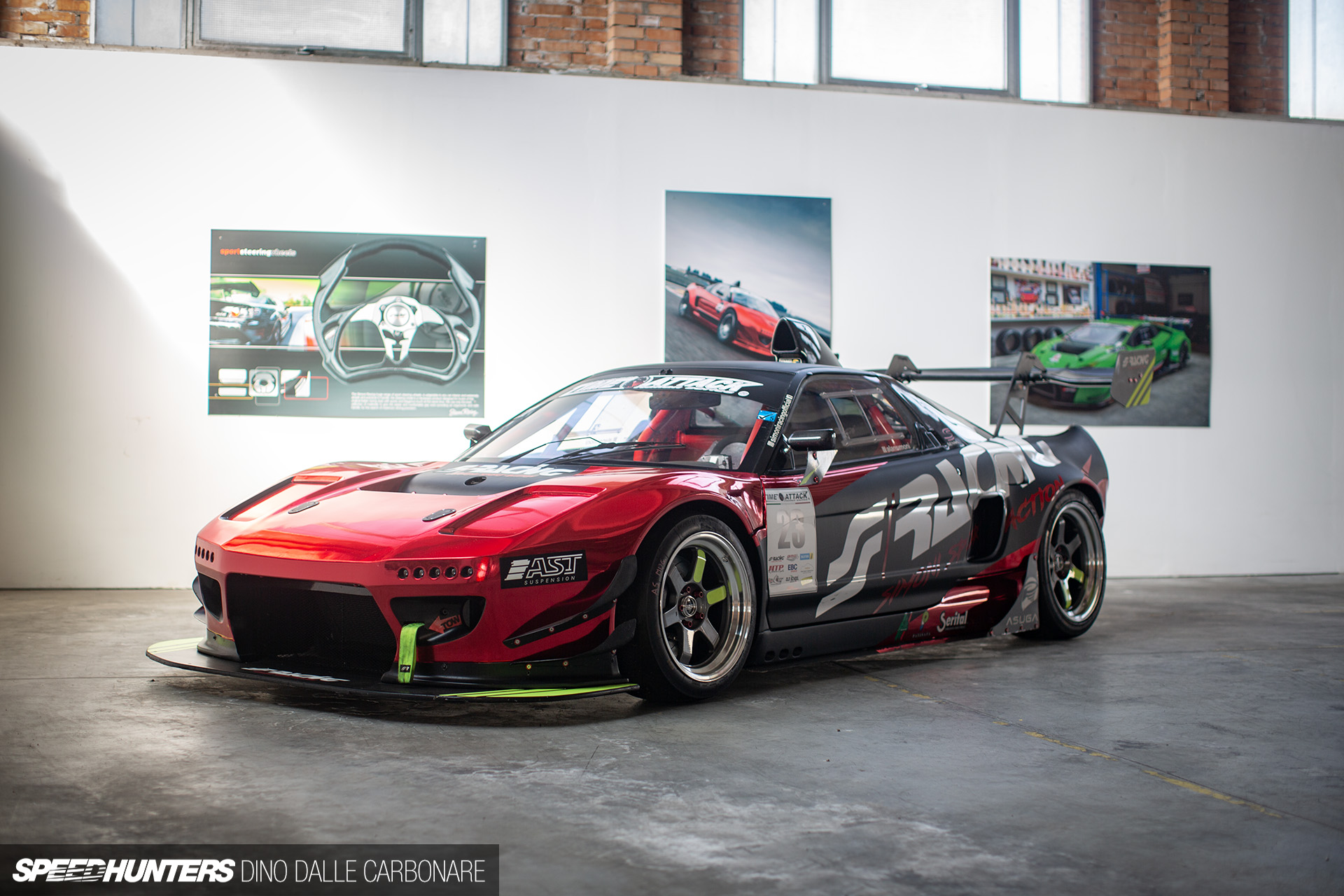













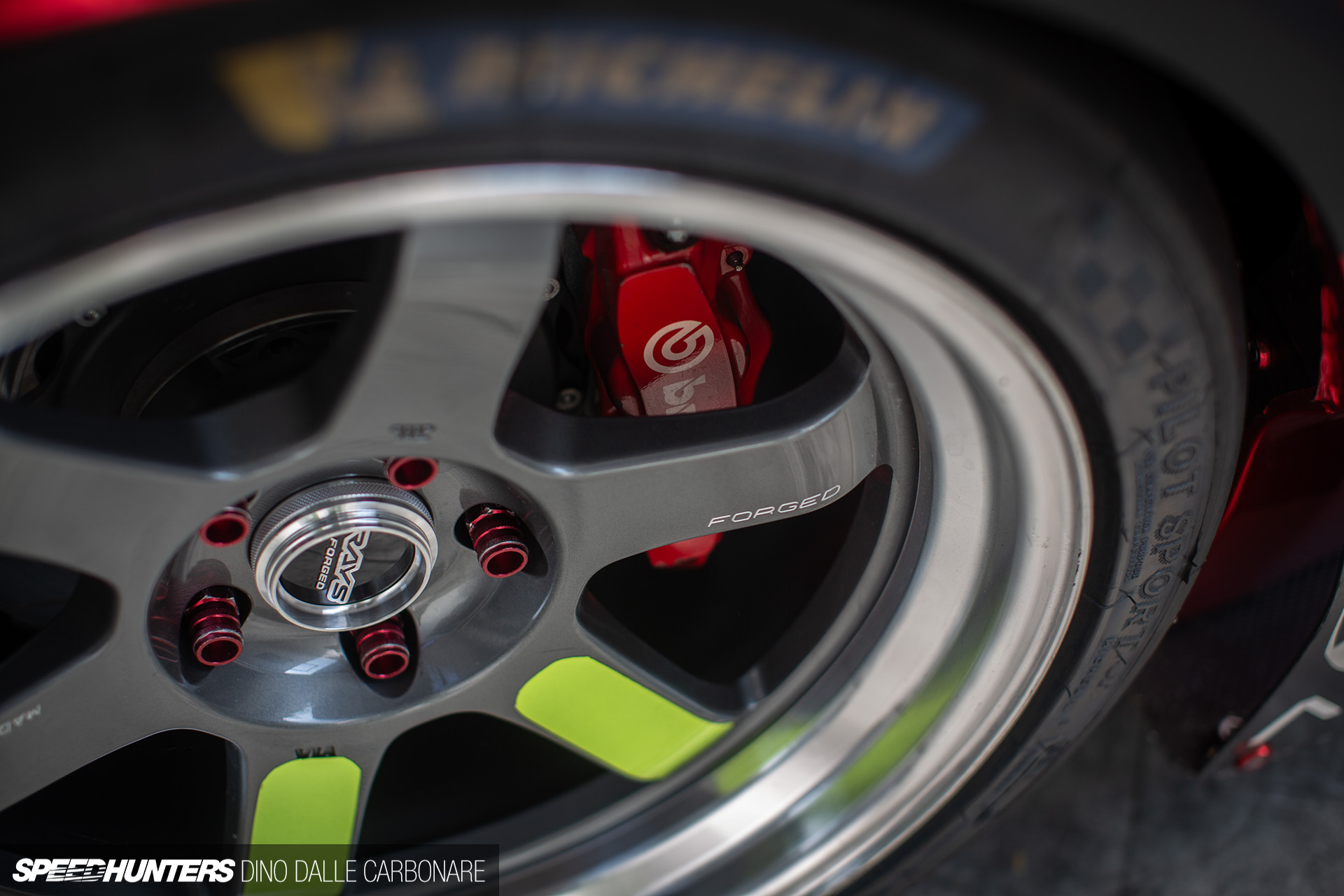

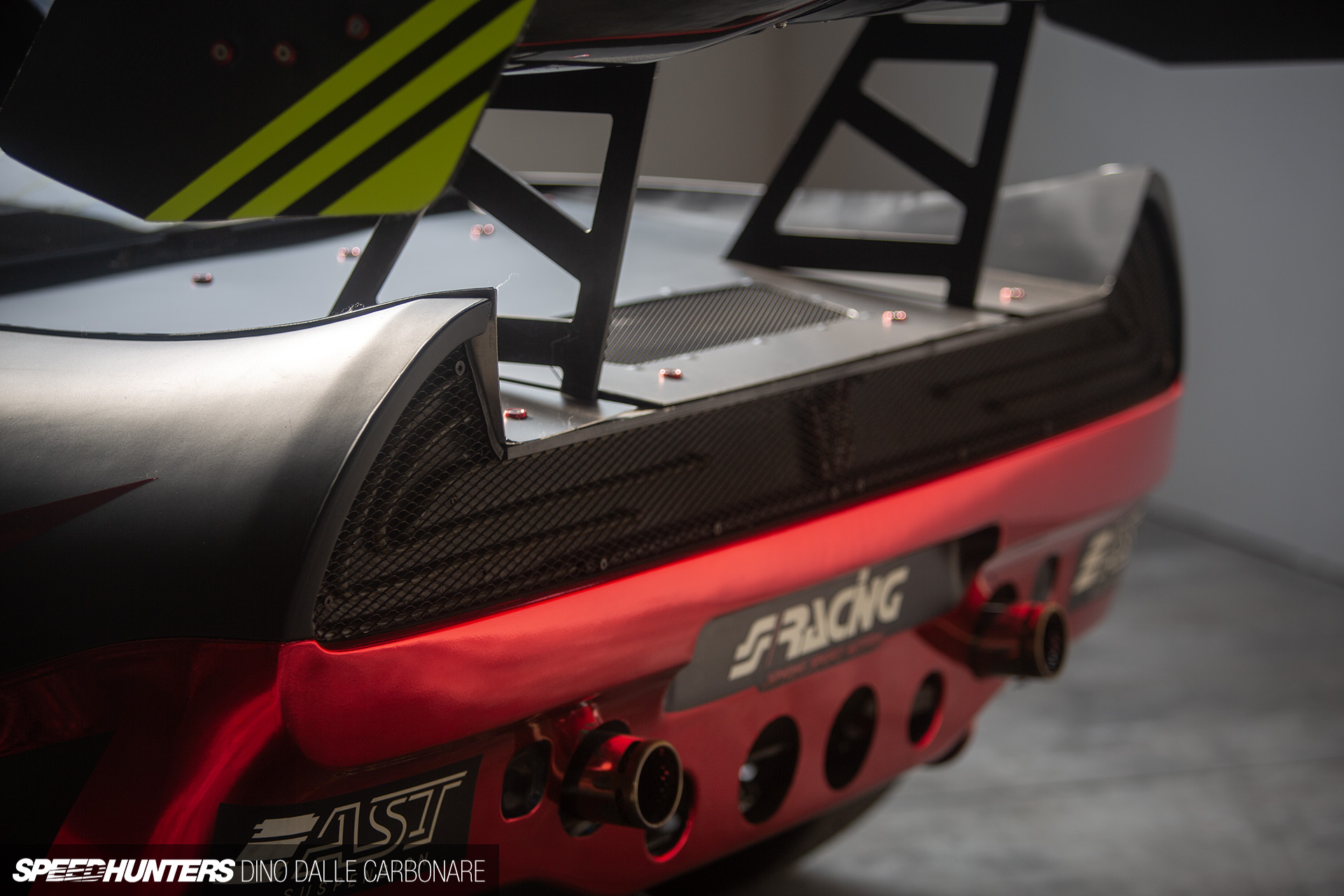
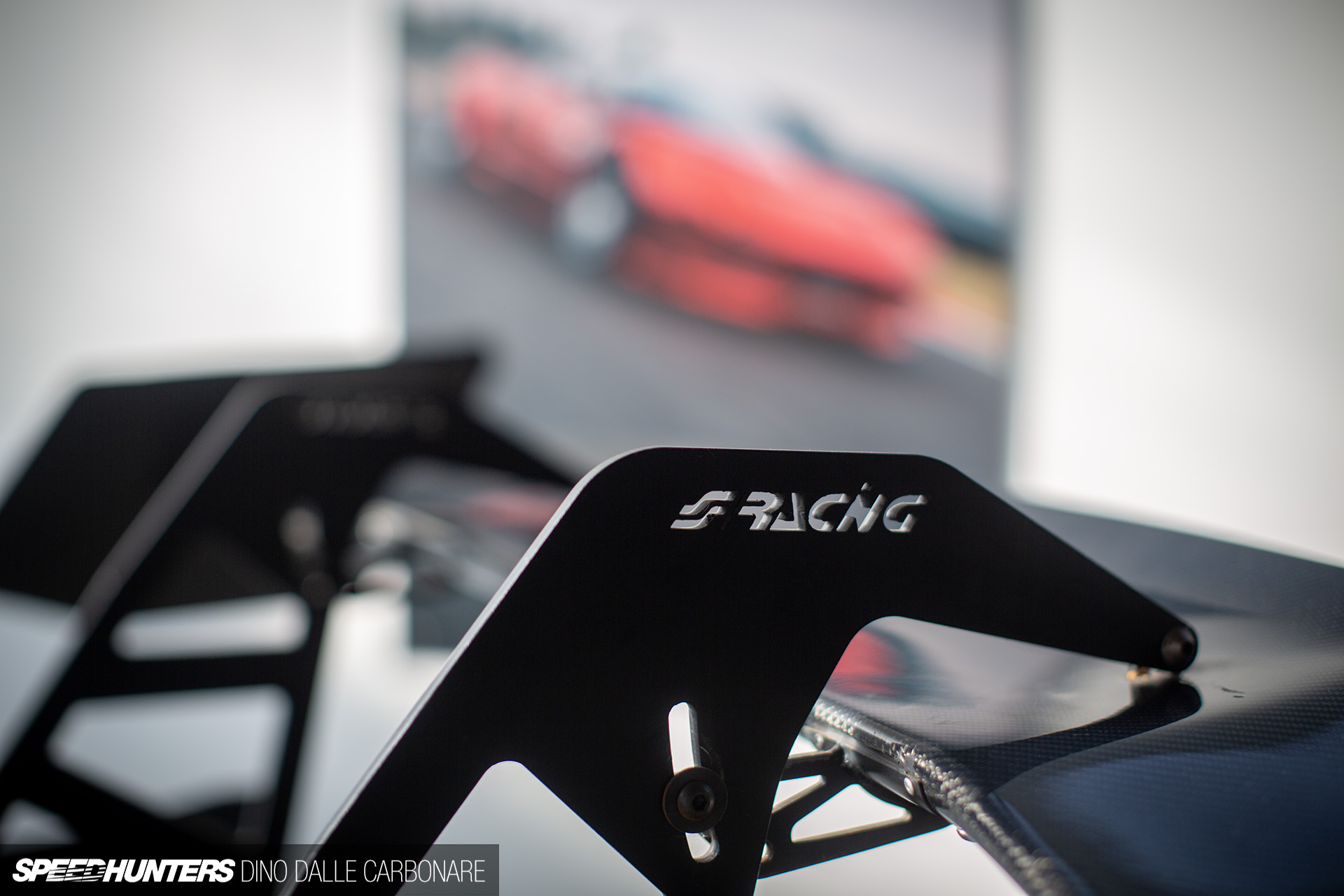






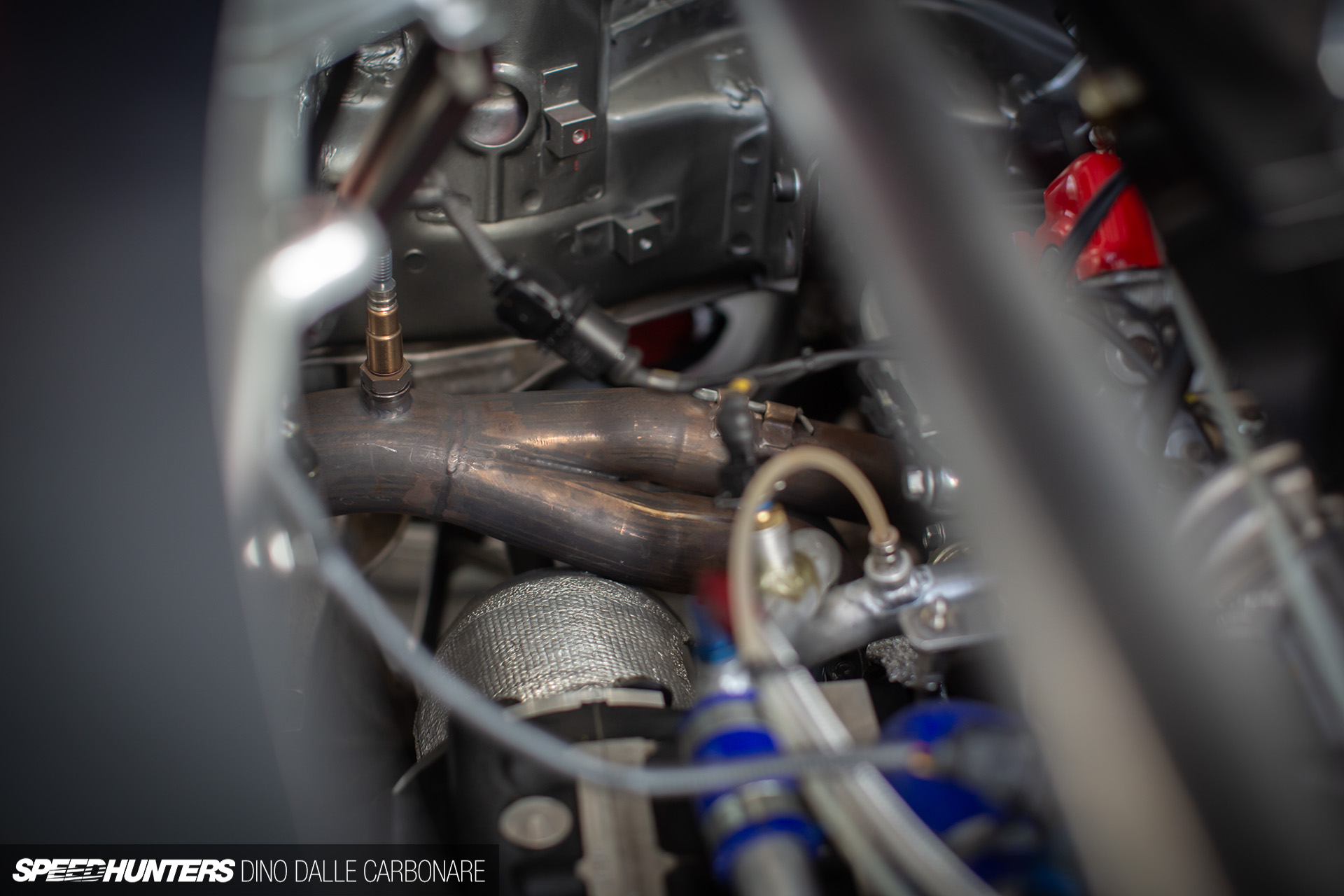





























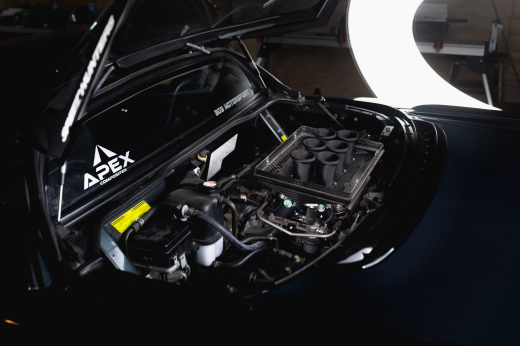
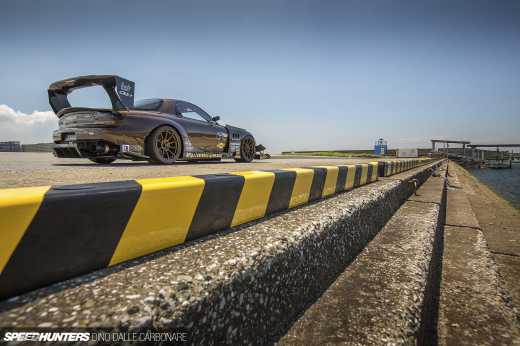







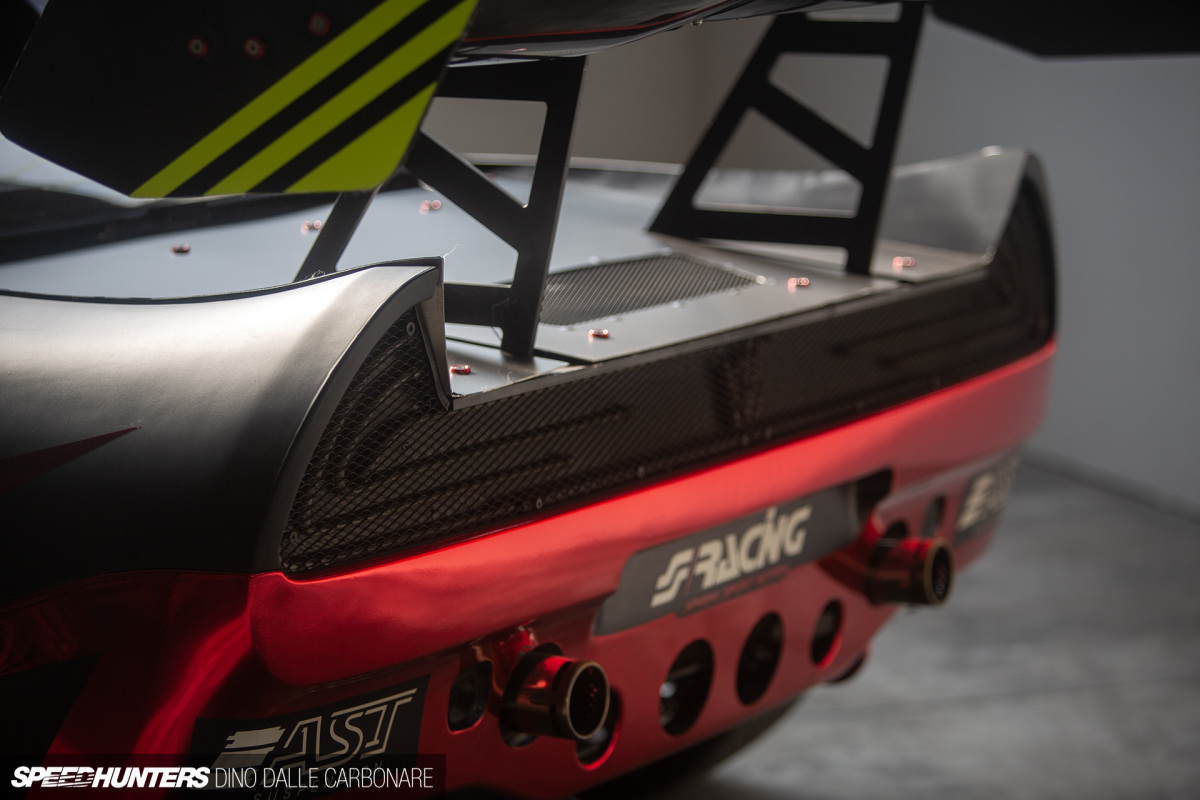











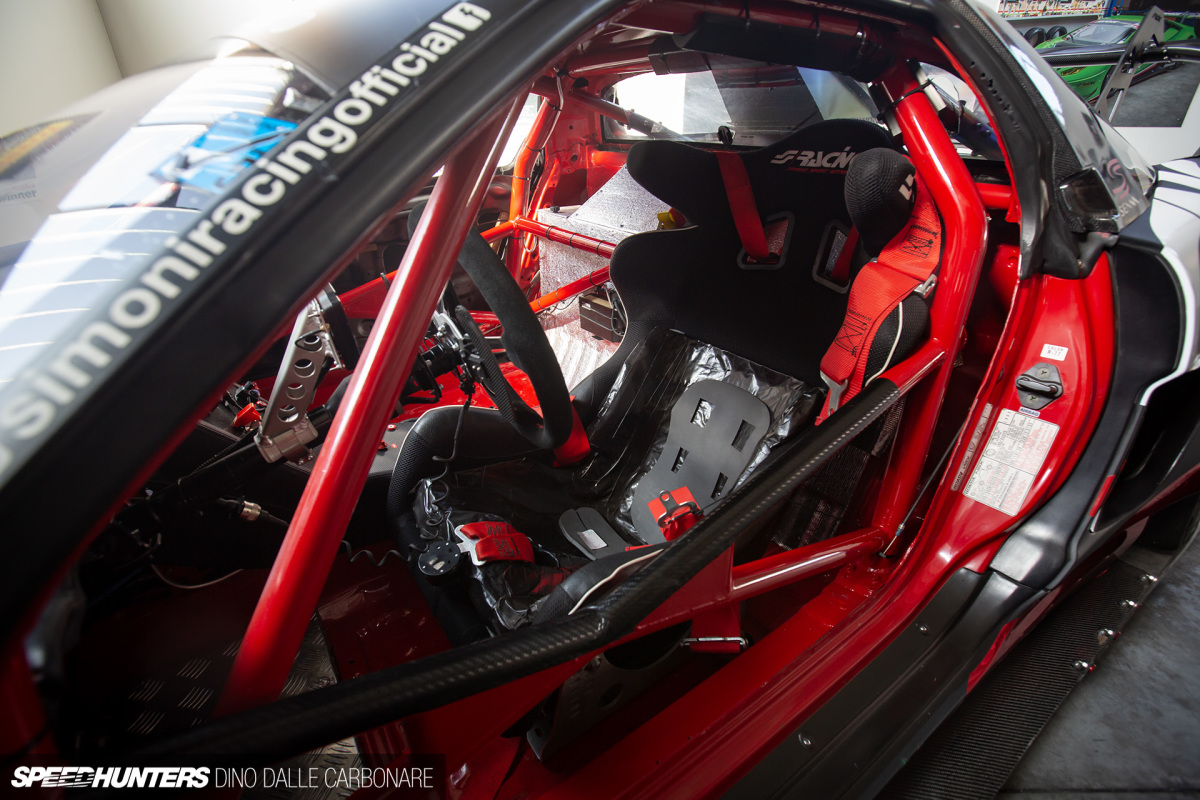
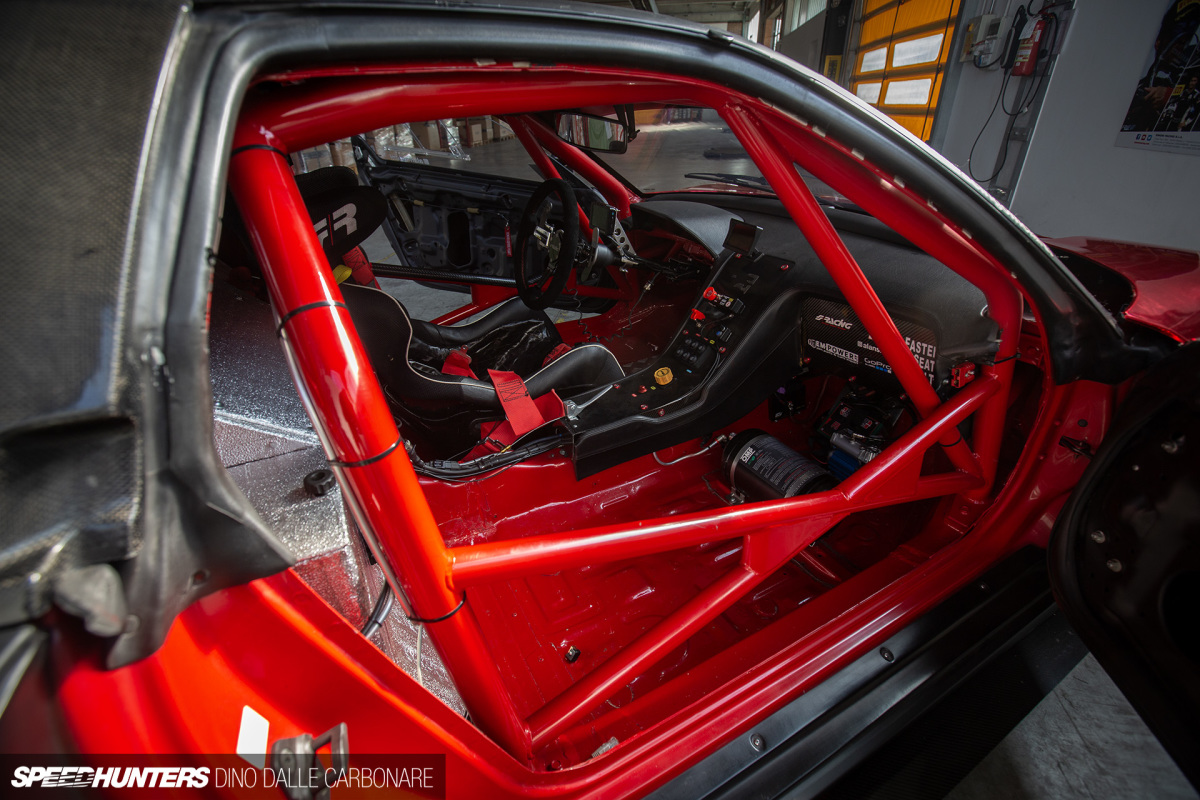

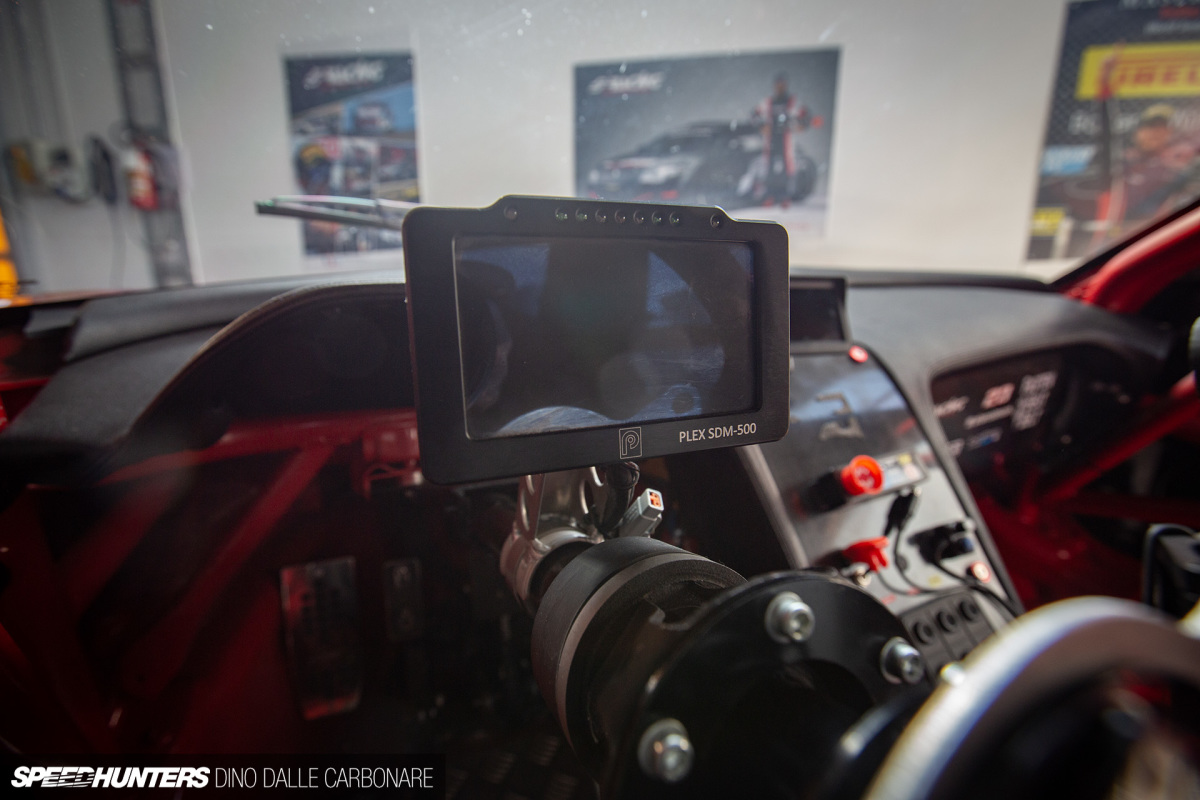








do you believe that a longitudinal setup on the nsx would provide a better drive than the transverse set up?
i figure honda did it for a lower moment of inertia and its a more compact setup than the longitudinal set up
you keep a lot of the mass in the wheel base too
good points, i also heard it was partly to fit golf clubs in the trunk
Yep they needed the trunk space, plus far less R&D costs taking a V6 with a transverse gearbox (which they did plenty of in FF applications) and adapted into a MR set up. If GT cars did the 90 degree rotation I'm assuming it was best for performance no? Not to mention symmetry!
Makes no difference in terms of polar moment of inertia.
I don't think so as it also sits partly into the firewall now
If rotating the engine into a longitudinal configuration they were able to somehow mount it further forward--thereby bringing it closer to the driver--that could have had a positive effect on weight distribution and maybe polar moment of inertia.
The GT500 Class Takata NSX had its engine mounted the same way as the road car (transverse) despite being based more on Dome's S101 LMP car. The rule book would be really insightful here. If the rules stated the car had to have the same configuration it's a bit of a moot point.
But if the rule book says they could run whatever configuration and Takata chose to keep the transverse layout that would be very insightful as to how much it really doesn't matter. There is definitely an argument to be made for JGTC NSXs as an example of what works.
Pretty badass car. I was curious about the change to longitudinal configuration so I reached out to an ex F1 designer from McLaren / Ferrari and asked if there was any performance advantage from a polar moment of intertia standpoint. This was his answer:
[The change from transverse to longitudinal is not important. What is important is if the weight distribution was improved front to rear. Was the transmission able to be improved as a result. Were suspension arms allowed to be lengthened by freeing up space in the engine bay to give better control geometry. There are so many factors that go into something like this, that to say it is improved by just changing the engine orientation is not accurate unless other components were allowed to be improved as a result. Very powerful engines like drag racing cars can twist as a result of their torque, so you might say "well why not make it transverse to improve things?" Well, that becomes a packaging issue.]
I thought this was interesting insight.
Very interesting
Here's a cutaway of the Takata car that I found on google. Not sure how accurate it is:
This build gives a sense of nostalgia while also showing what could be the future for an NSX build
Interesting proposition I know just my two cents
I did a little more research on this and I found that in 2003 the JGTC changed the rules to allow any engine configuration. The Mugen Dome team specifically ran a longitudinal engine and this is direct quote from Nagaosa San at Mugen:
"As we could not find much merit in only changing the engine mount to longitudinal, the overall layout was designed including the gearbox," said Nagaosa."
They ran a longitudinal engine, but they actually flipped the engine 180 degrees from normal mounting orientation so they could run the gearbox in front--just like the designer I spoke with from McLaren / Ferrari F1 said. (Damn...it gets really tiring being right about this stuff and constantly having people in the comments argue with the truth).
"The Honda NSX engine was originally mounted horizontally in the engine compartment behind the cockpit, but the 2003 JGTC version engine is mounted longitudinally. Moreover, the V6 block has basically been installed in reverse direction. This is a peculiarity of the 2003 NSX."
This allowed them to run the gearbox in front of the engine as opposed to behind it which gives better packaging / weight distribution / and YES would affect polar moment of inertia. So there you guys go. It's hilarious how I get down voted so much by the casuals, but usually when I reach out to mentors and do some research I find the people I trust to advise me are right again.
Maybe some of you people who read my comments should start doing your own research instead of spouting off BS when you read something that contradicts your entry level programming. Cheers guys!
Photo courtesy of Mugen.
What amazes me is Simoni's choice to use the Rocket Bunny kit. It's not a kit designed with time attack in mind, but he sure made it work.
Nice generic statement there. The fact that is your takeaway from this makes sense. Your other replies are also surface level as well.